Chile
Chili's Natural Splendor and Cultural Charm
Nestled along the rugged western coast of South America, Chile beckons to the seasoned traveler with its rich tapestry of landscapes, cultures, and experiences. For those seeking a journey that seamlessly blends history, adventure, and breathtaking vistas, this country offers a multitude of great destinations worthy of exploration.
From the soaring peaks of the Andes Mountains to the tranquil shores of the Pacific Ocean, from the enchanting charm of Valparaíso's colorful streets to the mesmerizing beauty of the Atacama Desert, often considered one of the driest places on Earth, showcases otherworldly landscapes, salt flats, and unique rock formations and celestial displays and further to the vineyard-laden valleys of Colchagua where wine tasting becomes an art, or to the enigmatic allure of Easter Island's ancient moai statues – Chile presents a mosaic of wonders that cater to both the curious spirit and the discerning palate.
Chilean culture is deeply rooted in indigenous traditions and Spanish colonial history. Retirees can immerse themselves in local customs, enjoy traditional dances and music, and savor authentic Chilean cuisine. The country's wine industry is also renowned, with the central valleys producing high-quality wines that retirees can enjoy while taking in the picturesque vineyard landscapes.
The warmth of Chilean hospitality is a hallmark of the country. Locals are known for their friendliness and willingness to share their culture with visitors, making retirees feel welcome and at home. Exploring local markets, attending festivals, and participating in community events can provide retirees with an opportunity to connect with the local community on a deeper level.
Torres del Paine National Park, Patagonia
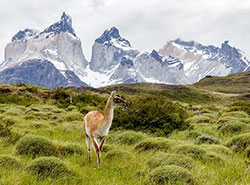
Photo by Jmarti20 / Pixabay | Situated amidst the captivating landscapes of Patagonia, Torres del Paine National Park offers a wealth of natural wonders from majestic granite peaks, serene glacial lakes, to expansive grasslands. For those seeking a more leisurely adventure, gentle walks along well-marked trails provide opportunities to witness the park's grandeur. |
| Wildlife enthusiasts can relish in observing guanacos, foxes, and the elusive puma, set against the backdrop of snow-draped mountains. Tranquil boat trips offer a chance to marvel at the mesmerizing Grey Glacier and its ethereal blue hues. Whether indulging in a nature walk, horseback riding, or simply savoring the unspoiled vistas, Torres del Paine offers a wonderful opportunity to experience the untamed elegance of Patagonia. |
Santiago
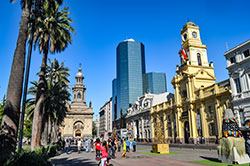
Photo by Mark / Adobe Stock | Santiago, Chile, offers a blend of cultural and leisure activities. Consider exploring historic neighborhoods like Bellavista and Lastarria for their artsy charm, followed by visits to museums such as the Museo Chileno de Arte Precolombino and the Museo de la Memoria y los Derechos Humanos. Leisurely park visits, particularly to Parque Metropolitano for panoramic views, and wine tasting tours in nearby vineyards are also favored.
|
| Enjoying local cuisine at Mercado Central, taking day trips to coastal towns like Valparaíso and Viña del Mar, and relaxing in hot springs.
|
Valparaíso
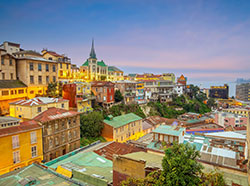
Photo by F11photo / Pixabay | Take a day trip to Valparaíso, a charming coastal town and UNESCO World Heritage Site renowned for its colorful houses and street art, provides a stimulating backdrop for leisurely strolls and exploration. Enjoy the sea breeze as you stroll along the Paseo 21 de Mayo promenade which provides stunning views of the coastline, the harbor, and the bustling maritime activity. |
|
The historic funiculars offer a nostalgic journey up the steep hills, granting breathtaking panoramic views of the Pacific coastline. Retirees can relish the city's bohemian ambiance through visits to art galleries, craft markets, and charming cafes. Valparaíso's unique blend of culture, scenery, and relaxation makes it an appealing destination for mature travelers. |
Pucón
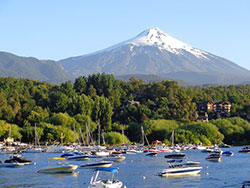
Photo by Martín Solar / Pixabay |
Visit Pucón in the serene Lake District wuth the majestic snow-capped peak Villarrica Volcano, one of Chile's most active volcanoes. Relish soothing hot springs, partake in leisurely boat rides on Lake Villarrica, and explore the quaint town's charming markets and eateries. providing a truly captivating and unforgettable expedition.
|
Easter Island
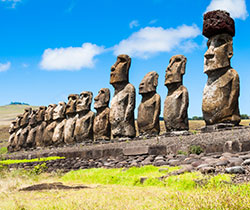
Photo by F11photo / Pixabay |
Located off the Pacific coast of Chili, The mysterious Easter Island, is famous for its moai statues, masterpieces of the Rapa Nui civilization. Delve into the island's history and craftsmanship through guided tours of these monolithic marvels, while also enjoying the tranquil beauty of Anakena Beach. The island does offer many hotels, resort and restaurant options to choose from to suit your budget and taste.
|
The island is accessed from Santiago, Chili either by air (about a 5 hour flight) or by cruise ship (about 3 days to arrive). For retirees seeking accessible options, it's essential to note that while the island does offer some wheelchair-friendly accommodations and tours, its rugged terrain can pose challenges for those with limited mobility. Nonetheless, the island's rich history and enigmatic landscapes make it a captivating choice for discerning travelers in search of a remarkable and unforgettable experience.
|
Best Time to Visit Chile:
Chile's climate can be characterized as Mediterranean, featuring two distinct wet and dry seasons that deviate from the traditional four-season pattern. Understanding these seasons and their associated rainfall patterns is key to planning the ideal visit to this diverse country.
Wet Season (May - August):
Chile's wet season aligns with the Winter months, spanning from May to August. During this period, the central and southern regions receive the majority of their annual precipitation. While this season contrasts with the traditional notion of Winter, it's the time when lush landscapes emerge and nature flourishes. However, it's important to note that the northern parts of Chile, including the Atacama Desert, also experience mild temperatures during this time, creating unique opportunities for winter travel with fewer tourists.
Dry Season (December - February):
Chile's dry season coincides with the Summer months, occurring from December to February. This is a prime time for tourism, particularly in the southern parts of the country. Popular destinations like Patagonia, Torres del Paine, and the Lake District offer optimal conditions for outdoor adventures. Coastal areas such as Valparaíso and Viña del Mar beckon visitors with beach and water activities. It's recommended to make accommodations well in advance, as this period marks the peak of the tourist season.
To assist in your travel planning, we've outlined the average temperatures for different regions by typical "four seasons". Keep in minnd that these temperature ranges are approximate and can vary. Also note that the seasons south of the equator are reversed from what you would expect in the northern hemisphere.
Spring average (September - November):
Spring is a delightful season to explore Chile as the weather begins to warm up after the winter chill. Blooming wildflowers adorn many regions, enhancing the visual appeal of outdoor excursions. The crowds are generally smaller compared to the bustling summer months. Popular destinations like Santiago, Valparaíso, and the Lake District offer pleasant exploration opportunities.
Spring temperatures:
- Northern Chile: 59°F - 68°F (15°C - 20°C)
- Central Chile: 52°F - 70°F (11°C - 21°C)
- Southern Chile: 46°F - 61°F (8°C - 16°C)
- Patagonia: 39°F - 52°F (4°C - 11°C)
December - February:
Chile's summer or "dry season" is a popular time for tourists, especially in the southern parts of the country. Patagonia, Torres del Paine, and the Lake District are particularly enjoyable during this time. Coastal areas like Valparaíso and Viña del Mar also attract visitors seeking beach and water activities. However, it's essential to book accommodations well in advance, as this is the peak tourist season.
- Northern Chile: 68°F - 77°F (20°C - 25°C)
- Central Chile: 64°F - 86°F (18°C - 30°C)
- Southern Chile: 54°F - 72°F (12°C - 22°C)
- Patagonia: 46°F - 61°F (8°C - 16°C)
March - May:
This is another favorable time to visit Chile, especially for wine enthusiasts. The vineyards in central Chile, including the famous wine-producing regions of Santiago, Maipo Valley, and Casablanca Valley, are a treat to explore during this mile weather season but note that May is the beginning of the Wet season.
- Northern Chile: 64°F - 73°F (18°C - 23°C)
- Central Chile: 57°F - 77°F (14°C - 25°C)
- Southern Chile: 50°F - 64°F (10°C - 18°C)
- Patagonia: 41°F - 54°F (5°C - 12°C)
June - August:
As mentioned earlier, Winter is the wet season. However, this is a great time to experience skiing and snowboarding in the Andes mountains. Resorts like Valle Nevado and Portillo attract winter sports enthusiasts. The north of Chile, including the Atacama Desert, experiences mild temperatures during the day, making it a unique winter destination with fewer tourists. It's worth noting that some areas in Patagonia may be challenging to access due to weather conditions.
- Northern Chile: 54°F - 64°F (12°C - 18°C)
- Central Chile: 45°F - 59°F (7°C - 15°C)
- Southern Chile: 39°F - 50°F (4°C - 10°C)
- Patagonia: 32°F - 45°F (0°C - 7°C)
|
Travel Planning Tips:
Research and Plan: Before your trip to Chile, take the time to research the cities, regions, and attractions that interest you. Chile offers diverse landscapes, from stunning coastal areas to the Andes mountains. Create an itinerary that suits your interests, ensuring you include both popular destinations and hidden gems.
Currency and Payment: Chile's currency is the Chilean Peso (CLP). While credit and debit cards are widely accepted in urban areas, it's a good idea to carry some local currency for small purchases and places that might not accept cards. Notify your bank about your travel plans to avoid any card-related issues.
Travel Insurance: It's essential to have comprehensive travel insurance that covers medical emergencies, trip interruptions, and cancellations. Check the policy details to ensure it meets your needs, and have a clear understanding of how to seek medical assistance if required.
Visa Requirements: Depending on your nationality, you might need a visa to enter Chile. Check the visa requirements well in advance and ensure your passport is valid for the entirety of your stay. Additionally, make sure your passport has at least six months of validity beyond your planned departure date.
Packing Essentials: Chile's geography varies, so pack according to the regions you'll be visiting. Comfortable walking shoes are a must, especially if you plan to explore cities and natural attractions. Don't forget to bring appropriate clothing layers, as temperatures can vary widely during the day.
Language: Learn a few basic Spanish phrases can enhance your experience and show respect for the local culture. "Hola" (hello), "Por favor" (please), and "Gracias" (thank you) are simple phrases that can go a long way.
Accommodations:
Hotels: Chile provides a range of accommodation options to suit different budgets and preferences. Many hotels offer senior-friendly amenities, such as elevators and accessible rooms. Inquire about senior discounts when booking, as some hotels might offer special rates for older travelers.
Boutique Hotels and Lodges: For a more personalized experience, consider staying in boutique hotels or lodges. These smaller establishments often offer unique charm, local character, and personalized service. This can be an excellent option for travelers seeking a more intimate atmosphere.
Wellness Retreats: Chile also has wellness retreats and spa resorts that offer relaxation and rejuvenation. Explore options located in scenic areas like the Atacama Desert or the Lake District. These retreats offer a range of treatments and activities aimed at enhancing well-being.
Hostels and Homestays: If you're looking to connect with locals and save on accommodation costs, consider staying in hostels or arranging homestays. This can provide an opportunity to immerse yourself in Chilean culture and possibly make new friends along the way.
Remember to consider Chile's unique cultural offerings, diverse landscapes, and vibrant history as you plan your vacation. By tailoring your trip to your interests and needs, you can make the most of your visit to this beautiful South American country.
Transportation:
Buses:Buses are the most popular way to get around Chile. There are many different bus companies operating in Chile, offering a variety of services and prices. Buses are generally comfortable and reliable, and they can be a great way to meet other travelers.
Domestic flights: Domestic flights are a convenient way to travel between major cities in Chile. There are several airlines operating domestic flights in Chile, including LATAM Airlines, Sky Airline, and JetSMART. Flights are generally affordable, and they can save you a lot of time if you are traveling long distances.
Trains: The train network in Chile is not as extensive as in some countries, but it does offer some scenic journeys. The most popular train journey in Chile is the "Tren del Sur", which runs between Santiago and Temuco. The train passes through the beautiful Chilean countryside, and it is a great way to see the country.
Car rentals: Car rentals are available in all major cities in Chile. Car rentals can be a good option for exploring remote areas at your own pace. However, it is important to note that the roads in Chile can be in poor condition, so it is important to drive carefully.
Health and Safety Tips:
- Exercise caution regarding your personal belongings to prevent theft, especially in crowded tourist areas.
- Avoid wearing expensive jewelry or displaying valuable items to minimize the risk of attracting unwanted attention.
- When crossing streets, be vigilant as traffic regulations might not be strictly enforced.
- Opt for bottled water to stay hydrated and avoid consuming tap water, which may not be safe.
- Take precautions against mosquito-borne illnesses such as malaria and dengue fever. Use insect repellent and wear protective clothing to reduce the risk.
- Choose reputable transportation services or arrange transfers in advance, particularly when arriving at or departing from airports.
- Stay informed about the safety conditions in the regions you plan to visit and follow advice from local authorities.
- Respect visa regulations and adhere to permitted stay durations to avoid legal complications.
South America Travel Visa Requirements
It is crucial to adhere to immigration regulations and visa requirements while traveling in South America to ensure a smooth and hassle-free journey. Overstaying your visa can lead to serious consequences in some countries. Here are some tips to help you avoid any issues related to overstaying your visa:
- Know Your Visa Requirements: Before traveling to South America, thoroughly research the visa requirements for the specific countries you plan to visit. Each country has its own rules regarding entry, duration of stay, and visa extensions. Familiarize yourself with the visa regulations and ensure that you meet the necessary criteria.
- Check Visa Validity Period: Carefully review the validity period of your visa and make sure you understand the maximum duration of stay allowed. Some visas may have specific conditions or restrictions, such as a limit on the number of days or requirements for visa extensions. Be mindful of these details to avoid overstaying.
- Plan Your Itinerary: Plan your itinerary in advance and make sure it aligns with the duration of your visa. Consider the time you intend to spend in each country and calculate the number of days you will be staying. Allow for some buffer time to account for unexpected delays or changes in your travel plans.
- Monitor Your Visa Expiry Date: Stay vigilant about the expiration date of your visa. Mark it on your calendar or set reminders to ensure you are aware of when your visa is due to expire. Avoid leaving it until the last minute to address any necessary visa extensions or depart the country within the permitted timeframe.
- Seek Visa Extensions, if Needed: If you find yourself in a situation where you need to extend your visa due to unforeseen circumstances or changes in travel plans, contact the local immigration authorities or embassy of the respective country. Follow the proper procedures for visa extension and submit the required documentation within the designated timeframe.
- Consult with Local Authorities: If you have any doubts or questions regarding your visa status or duration of stay, seek assistance from local immigration authorities or reputable legal professionals. They can provide accurate information, guidance, and support to help you navigate the visa regulations effectively.
- Respect Local Laws and Customs: While traveling, it is essential to respect the local laws, customs, and regulations of the countries you visit. Engaging in any illegal activities or violating visa rules can have severe consequences. Stay informed about the local laws and abide by them to ensure a safe and enjoyable journey.
- Travel Advisories Stay updated on current events, local regulations, and any travel advisories when traveling abroad. Visit the US Government State Department Travel Advisories web site to check on the status of your destination.
- Enroll in the STEP Program: Travelers are also urged to enroll in the U.S. State Department's Smart Traveler Enrollment Program (STEP) to receive security messages and to make it easier to locate them in an emergency. The Department uses these security messages to convey information about terrorist threats, security incidents, planned demonstrations, natural disasters, etc. In an emergency, please contact the nearest U.S. Embassy or consulate or call the following numbers: 1 (888) 407-4747 (toll-free in the United States and Canada) or 1 (202) 501-4444 from other countries.
Remember, visa regulations and enforcement can vary from country to country. It is your responsibility as a traveler to comply with the immigration laws of the countries you visit. By being knowledgeable, proactive, and respectful of visa requirements, you can avoid any issues related to overstaying your visa and ensure a positive travel experience throughout South America.
| |
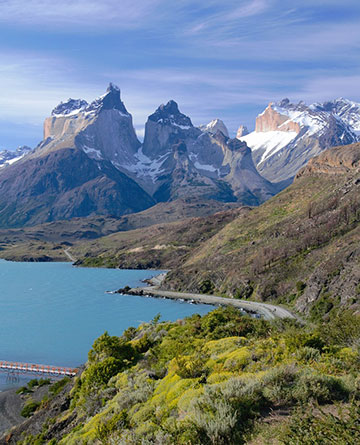 Torres del Paine National Park, Patagonia
Photo by Alexandra / Pixabay
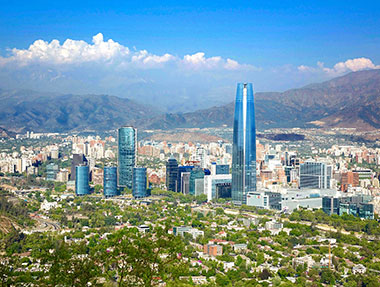 Santiago, Chili
Photo by Horst Engelmann / Pixabay
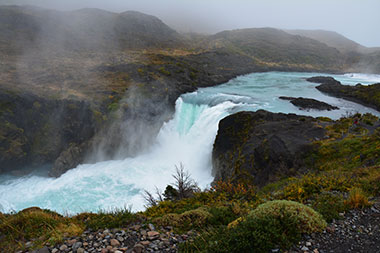 Salto Grande,Torres del Paine National Park Photo by Marc / Stock
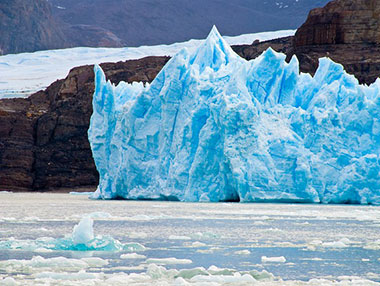 Photo by LuisValiente / Pixabay
|
 Torres del Paine National Park, Patagonia
Torres del Paine National Park, Patagonia  Santiago, Chili
Santiago, Chili Salto Grande,Torres del Paine National Park
Salto Grande,Torres del Paine National Park  Photo by LuisValiente / Pixabay
Photo by LuisValiente / Pixabay